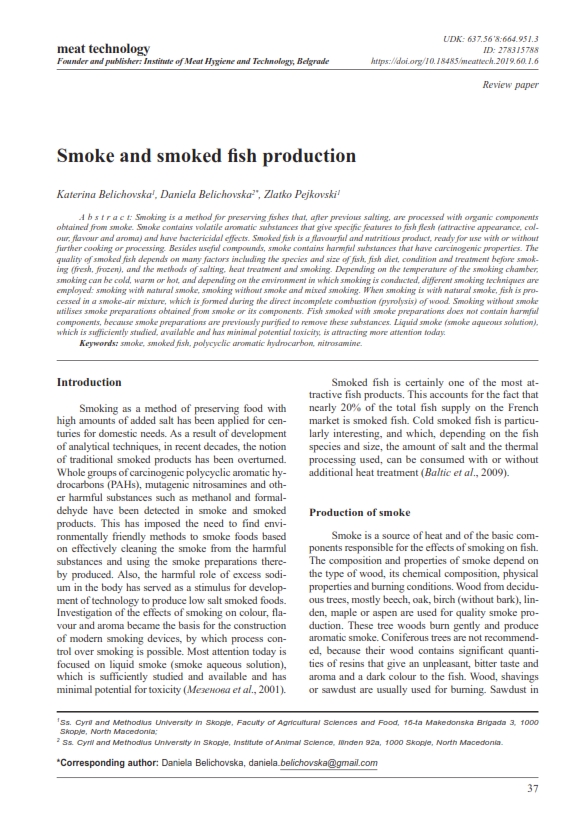Smoke and Smoked Fish Production
Abstract
Smoking is a way of preserving the fish which, after previous salting, are processed with organic components contained in the smoke during incomplete combustion (pyrolysis) of wood. Smoke contains volatile aromatic substances that gives specific features to meat (attractive appearance, color, taste, smell) and have a bactericidal effect. Smoked fish is tasty and nutritious product, ready for use without or with further cooking or processing. Besides useful, smoke contains harmful substances that have carcinogenic properties. Quality of smoked fish depends on many factors such as: type of fish, diet, condition and treatment before smoking (fresh, frozen), the method of salting, heat treatment, the way of smoking etc. Depending on the temperature of smoking chamber, smoking can be: cold, warm and hot, and depending on the environment in which smoking is conducted there are different smoking ways: smoking with smoke, smoking without smoke and mixed smoking. When smoking with smoke, fish is processed in a smoke-air mixture, which is forrmed during the direct combustion of wood. Smoking without smoke is processing fish with smoke preparations obtained by smoke or its components. Fish smoked with smoke preparations does not contain harmful components, because smoke preparations were previously purified from these substances. Liquid smoke (smoke aqueous solution), which is sufficiently studied, available and has minimal potential toxicity, attracts more attention today.





